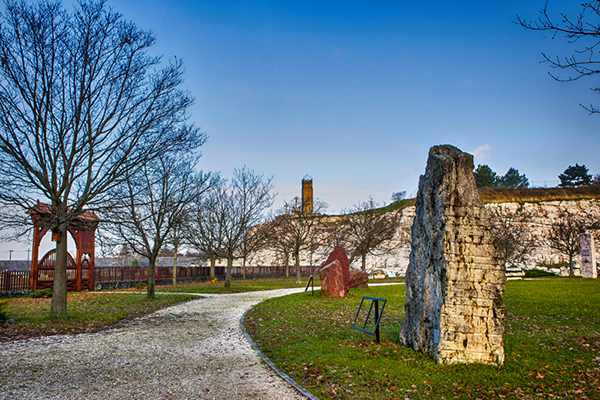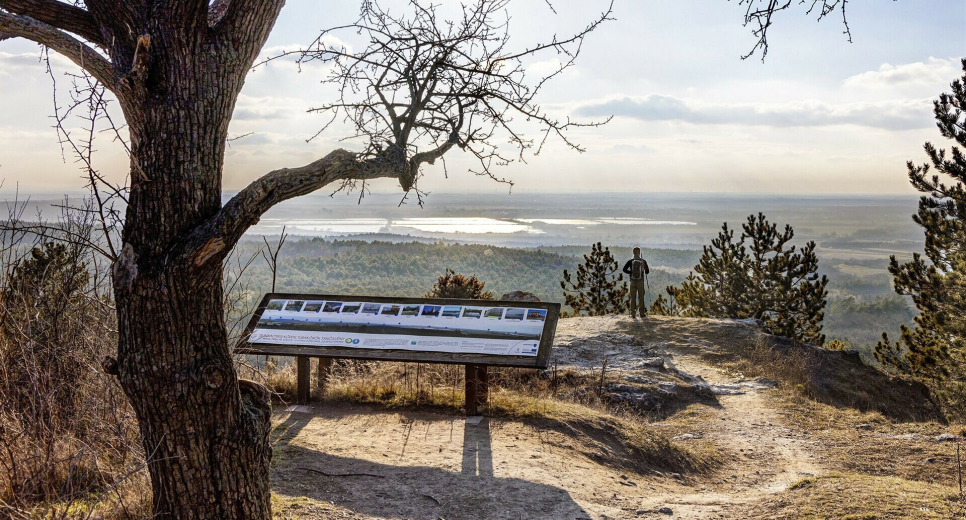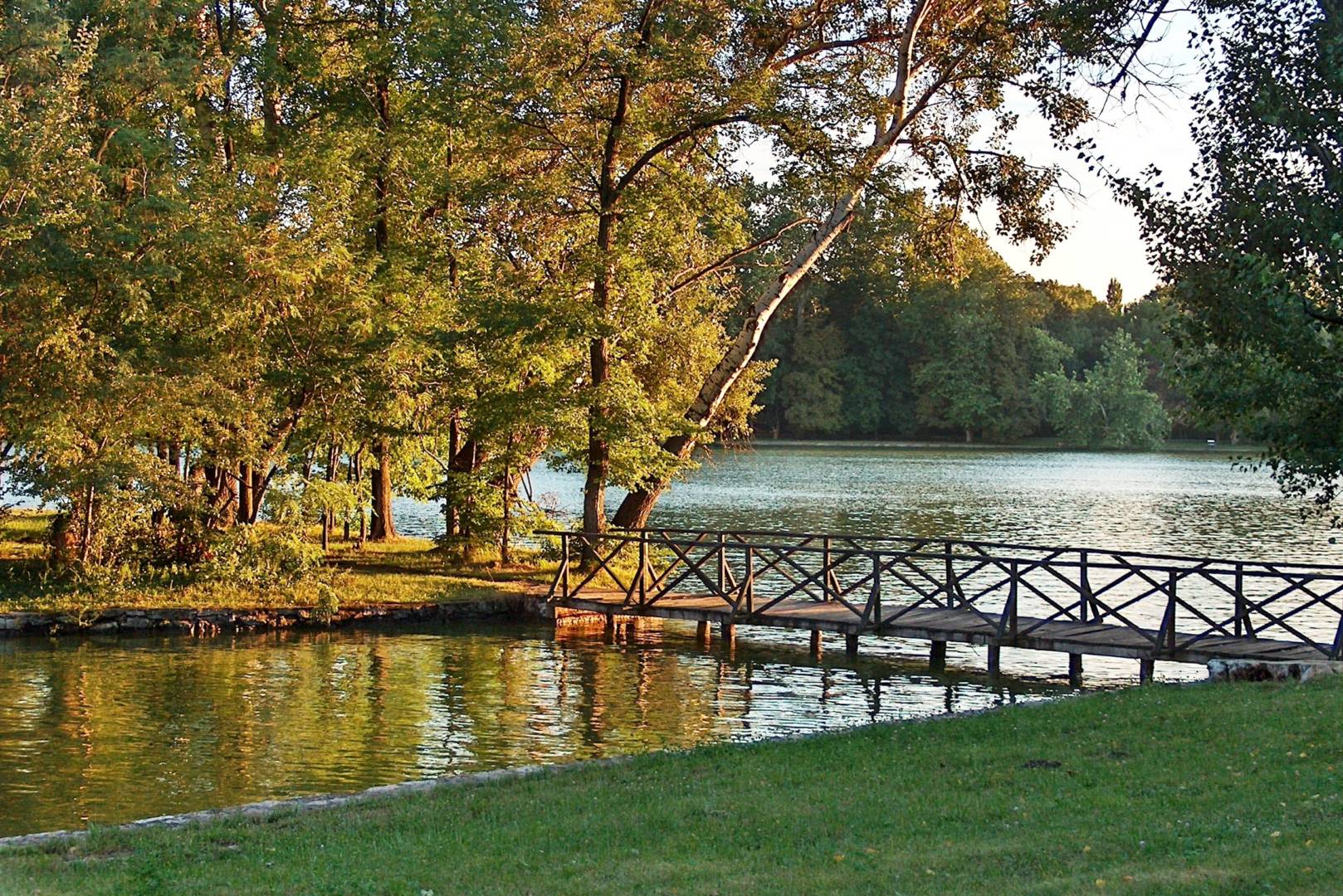English Garden - Tata
It is worth visiting Cseke Lake on the eastern side of the city, and the English Garden, which surrounds the lake with its beautiful slopes, promenades and monuments. The 23-hectare Cseke Lake was created behind an artifical dam by using the water of the formerly expanded springs. The first large-scale park in Hungary on the estate of the Esterházy family was built in 1783, designed by the estate engineer, Ferenc Böhm. At the time of its construction, the high-water resources provided a special climate, constantly wet soil in the area. The plants were selected for their flowering, foliage, crown size, colours and leaf colours. Weeping willows were first planted here in Hungary. Several artificial ruins were built in the garden, including the largest designed by Charles Moreau, using the remains of the Vertesszentkereszt Abbey, originally built at the end of the 12th century, however, the walls also feature a third-century Roman tomb. There is an artificial cave in the park, a grotto, originally called Hell. The lake is a real fishing paradise, the huge sycamore trees and the weeping willows with the crowns hanging in the water are lined up for the entire length of the lake.

Geologist Garden - Tata
The rock exhibition of the ELTE Tata Geologist Garden provides an opportunity to a quick visit to the great mountains of Hungary. Typical arrays arrived in the 1980s and 1990s from the quarries that were still in operation at that time. These are rocks that can be found in many places today as stone, buildings and fences in the form of cobblestones and sculptures. We can get to know the most important types of rocks, for example, the magmatic, sedimentary and transformed (metamorphic) rocks. The Garden also offers archaeological attractions. About 5–6,000 years ago, a copper age man mined the only non-limestone layer on the hilltop, the one-meter-thick, dark-red flintstone that was an important base material for the flintstone tools. The man lived in the protected caverns next to the site, where animal bones and traces of a stove were found alongside his tools. In the Porhanyókő mine on the other side of the hill, about 100,000 years old freshwater limestone from the spring water preserves the traces of our Neanderthal ancestors. The hill and the history of mankind are therefore intertwined from the beginning. Stone mining in the past centuries has revealed and demonstrated the rocks that make up the hill. The conscious landscaping of the second half of the 20th century somewhat "healed" the landscape of the hillside. Today, in addition to the landmarks of interest, the visitor can also encounter plants like a prickly pine-tree taken from the Chinese Emperor's Palace garden from the Forbidden City in Beijing as a shoot, or the Atlas Cypress with its disintegrating scones, or the Bald-Cypress with its air roots. The Székely Gate of the Geologist Garden was created by Ernő Cs. Kiss in 2000 in memory of the Millecentenarium.



